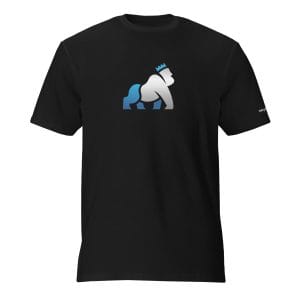Commodity Price Risk: Navigating Volatility
And Ensuring Profitability
The food and beverage industry is inextricably linked to the global commodity market. Fluctuations in the prices of key agricultural commodities, such as grains, oilseeds, and livestock, can significantly impact the profitability and stability of businesses across the sector. Understanding the dynamics of commodity price risk and implementing strategies to manage this volatility are crucial for ensuring financial stability and long-term success.
The Nature of Commodity Price Risk: A Volatile Landscape
Commodity price risk stems from various factors that influence the supply and demand of agricultural commodities:
- Supply and Demand Imbalances: Changes in global production, consumption patterns, and trade flows can create imbalances in supply and demand, leading to price fluctuations. For example, a drought in a major wheat-producing region can reduce supply and drive up wheat prices, impacting businesses that rely on wheat as a key ingredient.
- Geopolitical Events: Geopolitical events, such as wars, political instability, and trade disputes, can disrupt commodity markets and impact prices. For example, the ongoing conflict in Ukraine has disrupted grain exports, leading to price increases and volatility in global grain markets.
- Weather Patterns: Weather patterns, such as droughts, floods, and extreme temperatures, can significantly impact agricultural production and commodity prices. For example, excessive rainfall during harvest season can damage crops and reduce yields, leading to price increases.
- Economic Conditions: Global economic conditions, such as inflation, recession, and currency fluctuations, can influence commodity prices. For example, a strong US dollar can make US agricultural exports more expensive, impacting demand and prices.
- Speculation and Market Sentiment: Speculation in commodity markets and investor sentiment can also influence price movements. For example, if investors anticipate a shortage of a particular commodity, they may buy futures contracts, driving up prices even if the actual supply remains stable.
Impact on the Industry: From Profitability to Supply Chain Disruptions
Commodity price volatility can have significant consequences for the food and beverage industry:
- Profitability: Fluctuating commodity prices can significantly impact profit margins, especially for businesses with high input costs. This can make it challenging to maintain profitability and financial stability, particularly for smaller businesses with limited resources.
- Pricing Challenges: Volatile commodity prices can make it difficult to set stable prices for products, potentially impacting sales and customer relationships. Frequent price changes can confuse consumers and erode trust, while fixed prices may lead to losses if input costs rise significantly.
- Supply Chain Disruptions: Price volatility can disrupt supply chains as businesses struggle to secure affordable raw materials. This can lead to shortages, production delays, and difficulty meeting customer demand.
- Financial Planning: Fluctuating commodity prices can make financial planning and forecasting more challenging. This can make it difficult to predict future costs, manage budgets, and make informed investment decisions.
Examples of Commodity Price Volatility: Lessons Learned
Several historical events have demonstrated the impact of commodity price volatility on the food and beverage industry:
- The 2007-2008 Food Price Crisis: A surge in global food prices, driven by factors such as rising oil prices, increased demand from emerging economies, and adverse weather conditions, led to food shortages, social unrest, and economic instability in many countries.
- The 2010-2011 Russian Wheat Export Ban: A severe drought in Russia led to a wheat export ban, disrupting global wheat markets and causing price spikes. This impacted food prices and supply chains around the world.
- The 2022 Surge in Fertilizer Prices: The war in Ukraine and disruptions to global fertilizer supply chains led to a surge in fertilizer prices, impacting agricultural production costs and food prices.
Strategies for Managing Commodity Price Risk: A Proactive Approach
Managing commodity price risk requires a proactive and strategic approach, encompassing various strategies:
- Hedging: Utilize hedging strategies, such as futures contracts, options, and swaps, to mitigate price volatility and lock in prices for key commodities. This allows businesses to protect themselves against price increases and reduce uncertainty in their cost structures.
- Strategic Sourcing: Diversify sourcing strategies, negotiate long-term contracts with suppliers, and explore alternative ingredients to reduce reliance on volatile commodities. This can help stabilize input costs and mitigate supply chain disruptions.
- Flexible Pricing: Implement flexible pricing strategies to adjust product prices in response to commodity price fluctuations. This can include using cost-plus pricing models, dynamic pricing strategies, or incorporating price escalation clauses in contracts.
- Data Analysis: Utilize data analysis to track commodity price trends, forecast potential price changes, and make informed purchasing decisions. This includes using historical data, market analysis tools, and predictive modeling to anticipate price movements and optimize sourcing strategies.
- Supply Chain Optimization: Optimize supply chain processes to reduce waste, improve efficiency, and minimize the impact of commodity price fluctuations. This includes streamlining logistics, improving inventory management, and collaborating with suppliers to reduce lead times and improve responsiveness.
The Future of Commodity Price Risk Management: Adapting to a Volatile World
Commodity price risk will remain a significant challenge for the food and beverage industry. Geopolitical instability, climate change, and evolving consumer demands will continue to influence commodity prices, requiring ongoing risk management and strategic sourcing. By embracing a proactive approach to risk management, investing in technology, and fostering collaboration, businesses can navigate volatility, ensure profitability, and thrive in a dynamic market.
The GorillaBrave Newsletter
Stay in the know! Get plugged in, gain access to exclusive information, apparel, events, and a lot more to help you grow your food business.
Upcoming GorillaBrave Events
GorillaBrave Apparel
-
- T-Shirts
GorillaBrave (Blue) T-Shirt
- $35.00
- Select options This product has multiple variants. The options may be chosen on the product page
-
- Hoodies
GorillaBrave (Black) Hoodie
- $48.50 – $58.50
- Select options This product has multiple variants. The options may be chosen on the product page
-
- Hoodies
GorillaBrave (White) Hoodie
- $52.50 – $63.50
- Select options This product has multiple variants. The options may be chosen on the product page
Are you courageous enough to be GorillaBrave?





